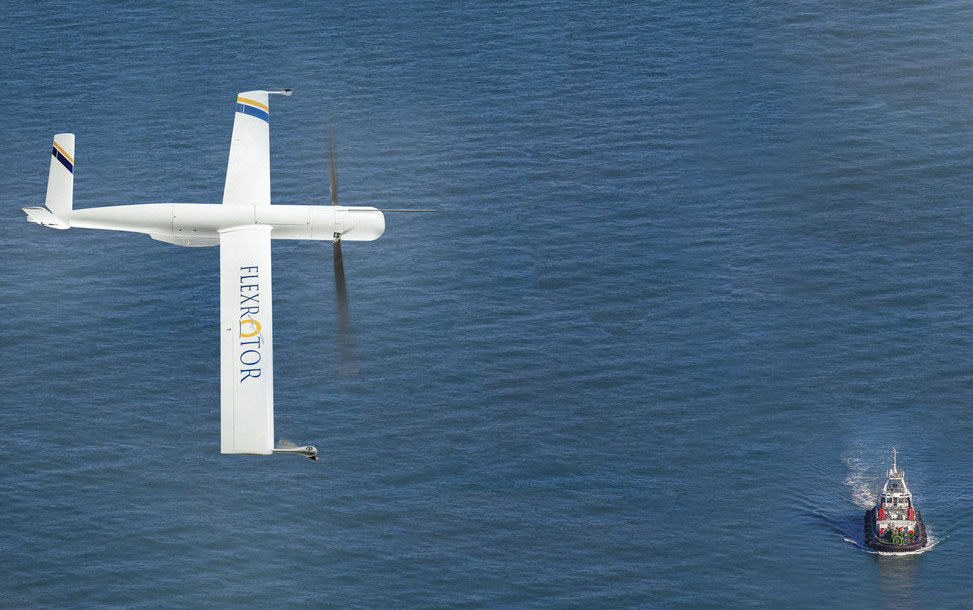Flexrotor Finds Faraway Fish Fast

November 13, 2015
“We panned the camera out over the Chesapeake, and there they were, four-and-a-half kilometers away,” recalls Aerovel’s Tad McGeer. “It was our first day of demonstrating Flexrotor for the US Coast Guard.” Flexrotor, Aerovel’s exceptional unmanned aircraft, has caught the Coast Guard’s attention with its unique combination of small size, light footprint, VTOL, long endurance, and economy. “They asked us to come to the Potomac so they could see it for themselves.”
Flexrotor quickly ran through the Coast Guard’s demonstration objectives, including detection of boats and small objects in wide-area search over the Bay, tracking and inspection of fast boats, and transfer of control between stations ashore and aboard a 45-foot Response Boat. Aerovel’s Kris Gauksheim, squeezed behind a tiny wheelhouse table barely big enough for his laptop and monitor, had also operated Flexrotors aboard an expedition yacht during an anti-poaching trial off Costa Rica’s Cocos Island. He commented that the RB-M “was a little more spartan, so it’s a good thing that Flexrotor doesn’t need much room.”
Officers with experience on a variety of Coast Guard vessels spotted a potential game-changer: an asset which could operate in numbers from boats large or small, and multiply the effectiveness of any of them at low cost. For Aerovel’s crew, however, it was the fish that were new and exciting. “We look forward to supporting the Coast Guard in their ongoing studies of unmanned aircraft,” said McGeer. “But meanwhile we start work on tuna seiners early in 2016.” Flexrotor can change the seiner’s game, too. Large seiners can use it to replace helicopters, which are expensive and appallingly accident-prone. And every small seiner can now have its own airborne reconnaissance, with Flexrotors flying economically as far from the ship as her captain cares to search, dawn to dusk, with real-time video available to all on board.
“We had shown that Flexrotor can operate from a small boat, but the key remaining question was whether it could effectively spot fish. Now we’ve done that, with one ‘foamer’ after another popping up on-screen as the turret scanned the middle distance.” (A foamer is a whitish patch caused by a school of feeding predators – in this case apparently bluefish.)
“Actually we were looking for a boat. The fish were serendipitous, and on seiners we will be searching for bigger schools at comparable distance. So while search is hard work for anyone – on a helicopter or watching a monitor – we’ve shown that Flexrotor can get the job done well.” Video of one foamer is posted on Aerovel’s YouTube channel.




